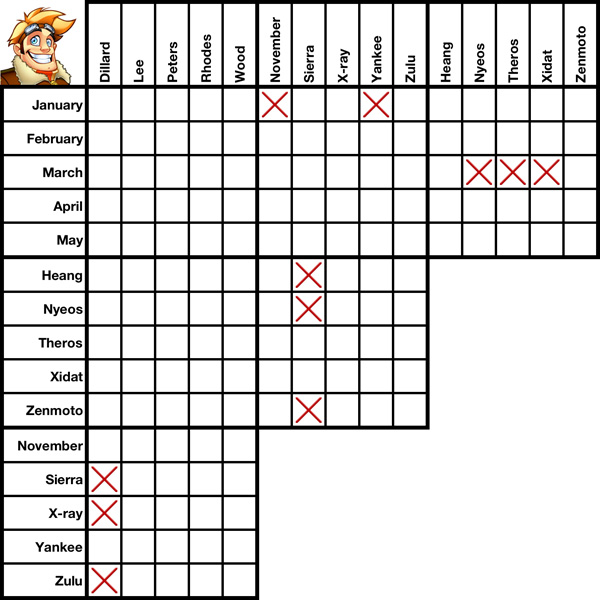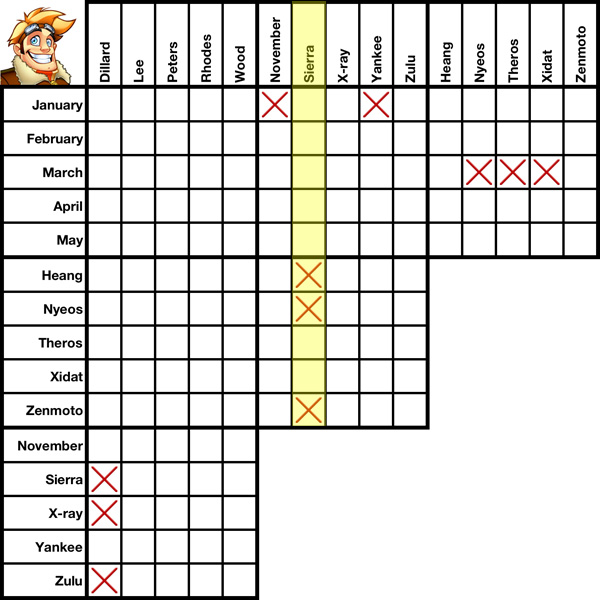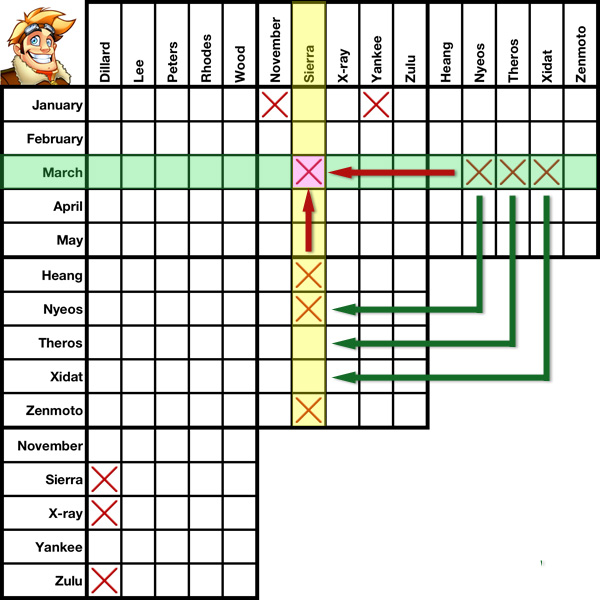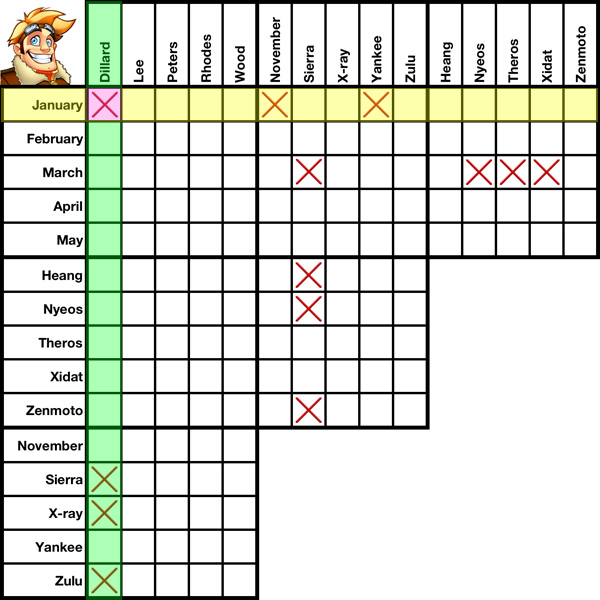Skewed cross eliminations are really not much different from parallel cross eliminations... they're just harder to spot. The basic logic is the same: If A can only be X, Y or Z, and B cannot be X, Y or Z, then A cannot be equal to B.
We'll use this grid to illustrate a few cross elimination examples.









